Click on images to enlarge
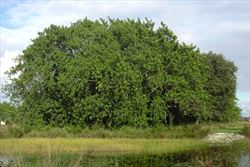
habit of large tree (Photo: Forest and Kim Starr, USGS)
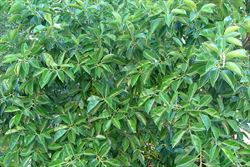
habit (Photo: Sheldon Navie)
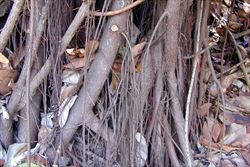
stems and aerial roots (Photo: Forest and Kim Starr, USGS)
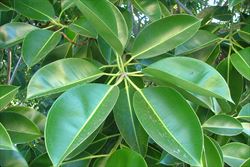
glossy green leaves (Photo: Sheldon Navie)
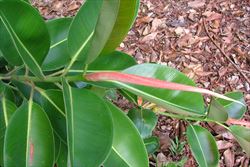
growing point enclosed in large pinkish stipule (Photo: Sheldon Navie)
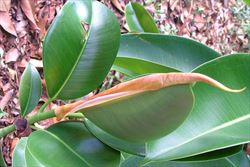
old stipule being shed (Photo: Sheldon Navie)
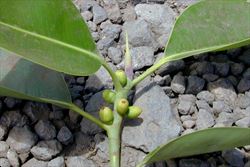
immature fruit (Photo: Forest and Kim Starr, USGS)
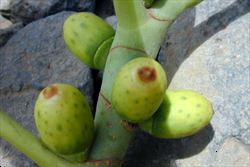
close-up of immature fruit (Photo: Forest and Kim Starr, USGS)
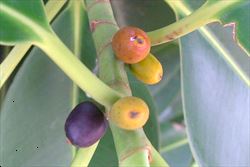
close-up of mature fruit (Photo: Sheldon Navie)
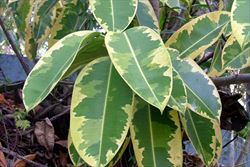
ornamental cultivar (Photo: Sheldon Navie)
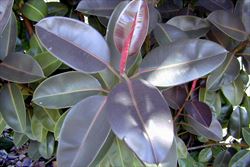
ornamental cultivar (Photo: Forest and Kim Starr, USGS)
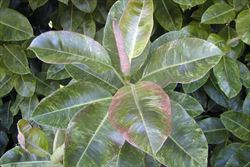
ornamental cultivar (Photo: Forest and Kim Starr, USGS)
Scientific Name
Ficus elastica Roxb. ex Hornem.
Synonyms
Ficus decora hort.
Family
Moraceae
Common Names
Assam rubber, India rubber fig, Indian rubber plant, Indian rubber tree, Indian rubberplant, Indian rubbertree, rubber plant, rubber tree, rubberplant
Origin
Native to the Indian Sub-continent (i.e. Bhutan, northern India and Nepal) and south-eastern Asia (i.e. Myanmar and Indonesia).
Naturalised Distribution
This species is sparingly naturalised in the coastal districts of south-eastern and northern Queensland. There are also unconfirmed reports that it is naturalised in the coastal districts of central and northern New South Wales.
Naturalised overseas on some Pacific (i.e. in New Caledonia and Western Samoa), in south-eastern USA (i.e. Florida) and in Central and South America.
Notes
Indian rubber tree (Ficus elastica ) is widely cultivated, but only occasionally naturalised, in the coastal districts of eastern Australia. However, it is regarded as an environmental weed on a local and regional level in many parts of eastern New South Wales (e.g. in the North Sydney region and in the Warringah, Ku-ring-gai, Kogarah, Liverpool, Lismore, Cessnock and Byron councils) and south-eastern Queensland (i.e. in the Brisbane City, Noosa and Redlands local authority areas).
It has also been recorded as a relatively rare invasive weed along the sandy beachfronts of south-eastern and central Queensland and is listed as a serious environmental weed on Christmas Island, where it is localised in rainforest vegetation.
Indian rubber tree (Ficus elastica) probably only spreads vegetatively in Australia, either by layering or in dumped garden waste. There are numerous different horticultural cultivars available, which exhibit a wide variety of foliage colouration.

